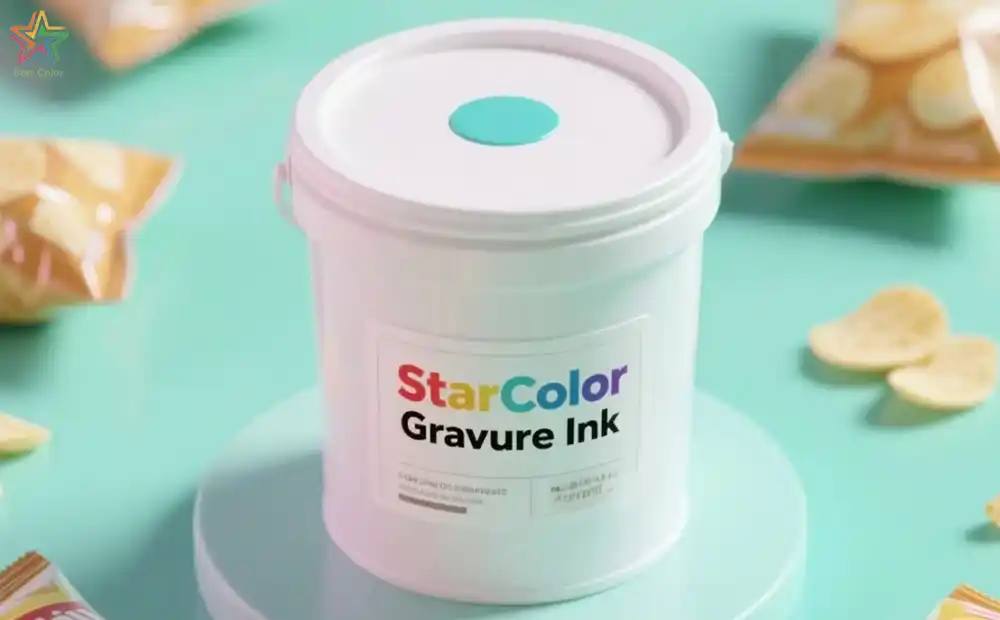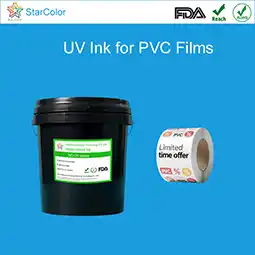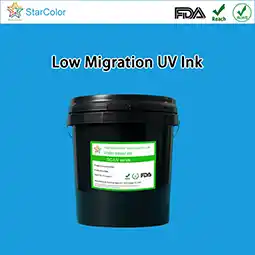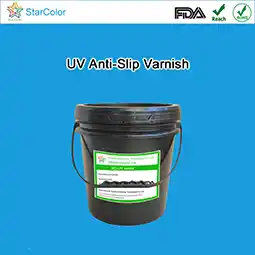Lamination Strength Problems in Water-Based Gravure Inks
Date: Sep 25 2025 From: Star Color Views:
In the food flexible packaging sector, gravure reverse printing combined with lamination is often adopted to ensure food safety, effectively blocking ink migration into food. However, this brings a new challenge: lamination strength. As a key indicator of packaging quality (typically required to be ≥3N/15mm), laminationstrength determines whether the package can withstand transportation, resist delamination, and prevent leakage. Insufficient strength may cause delamination, wrinkling, or even packaging failure.
Industry surveys indicate that around 35% of lamination failures with water-based gravure inks are caused by inadequate bond strength, far higher than solvent-based inks (15%). This article analyzes the core causes affecting lamination strength and provides practical solutions to help converters overcome lamination challenges.

1. What is lamination Strength in Water-Based Gravure Inks?
The lamination process with water-based gravure inks involves forming a stable structure of substrate + ink layer + adhesive + secondary substrate through physical adsorption and chemical bonding. lamination strength depends on two main factors:
-
Ink-to-substrate adhesion – The water-based ink resin must bond with polar groups on the substrate surface via hydrogen or covalent bonds.
-
Ink-to-adhesive compatibility – The ink’s surface energy must closely match the adhesive (difference ≤5 dyn/cm), with no residual low-molecular substances that could block adhesive penetration.
Any weakness in these links will directly reduce lamination strength.
2. Six Core Causes of Weak lamination Strength
(1) Inadequate Substrate Pretreatment
-
Issue: Non-absorbent substrates (BOPP, PE) with surface tension ≤34 dyn/cm prevent proper ink wetting, reducing adhesion to just 2B grade. Ink easily peels off during lamination.
-
Causes:
-
Insufficient or aged corona treatment.
-
Residual oil, slip agents, or contaminants forming an isolation layer.
-
-
Data: BOPP film with 34 dyn/cm surface tension achieved only 2.1N/15mm adhesion; after corona treatment to 38 dyn/cm, adhesion improved to 4.5N/15mm (+60% lamination strength).
-
Solution:
-
Corona treatment: BOPP/PET ≥38–42 dyn/cm; PE ≥36–38 dyn/cm.
-
Print within 4 hours post-treatment (otherwise re-treat).
-
Clean surface oil and slip agents using alcohol wipes or plasma cleaning.
-
(2) Poor Resin System Compatibility
-
Issue: Ink layers are either too brittle (cracking) or overly soft (poor bonding with adhesive).
-
Causes:
-
Single acrylic resin = brittle film, low flexibility.
-
Lack of polar groups = poor hydrogen bonding with adhesive.
-
Resin content too low: solids <40%, resin <30%, porous ink layer → “false bonding.”
-
-
Case: A converter using pure acrylic resin (solids 35%) achieved only 2.2N/15mm on PE film; switching to acrylic–polyurethane hybrid resin (solids 45%) improved strength to 3.8N/15mm.
-
Solution:
-
Use acrylic–polyurethane hybrid resins (Tg 30–40℃) for balance of adhesion and flexibility.
-
Ensure solids ≥45%, resin ≥35%.
-
Maintain viscosity 25–35 s (DIN 4 cup, 25℃).
-
Add coupling agents/surface modifiers to boost bonding.
-
(3) Incomplete Drying of Ink Layer
-
Issue: Residual water >5% causes bubbles and weak adhesive penetration during lamination.
-
Data: With residual moisture at 2%, lamination strength = 3.5N/15mm; at 6%, it dropped to 1.8N/15mm with visible bubbles.
-
Solution:
-
Optimize drying parameters (temperature, air speed, dwell time).
-
Keep residual moisture ≤2% (regular sampling check).
-
(4) Mismatch of Adhesive Selection and Process
-
Issue: Adhesive shrinks or fails to spread, creating spot-bonding instead of uniform bonding; lamination strength fluctuates (±1N/15mm).
-
Causes:
-
Ink–adhesive polarity mismatch (water-based inks = polar; rubber adhesives = nonpolar → shrinkage).
-
Insufficient adhesive coating or low lamination pressure.
-
-
Data: Polar polyurethane adhesive (3 g/m²) achieved 95% coverage and 3.6N/15mm strength; nonpolar rubber adhesive achieved only 60% coverage and 1.9N/15mm strength.
-
Solution:
-
Select polar polyurethane adhesives with strong ink compatibility.
-
Control adhesive coating at 3–4 g/m².
-
Maintain lamination pressure 0.4–0.6 MPa, temperature 45–55℃.
-
(5) Insufficient Post-Curing of Adhesives
-
Issue: Without post-curing or with inadequate curing conditions, adhesives do not fully crosslink. Initial strength may pass, but drops >30% after one week.
-
Data: Post-cured at 45℃ × 12h → 95% strength retention after 1 week; room temperature storage → only 68% retention.
-
Solution:
-
Ensure post-curing at 40–50℃ for 8–12h.
-
Maintain humidity <65% during curing.
-
Verify retention: ≥90% strength after 1 week.
-
3. Case Study: Lamination Strength Upgrade in Snack Packaging
-
Background: A food packaging company used water-based gravure ink on BOPP laminated to PE for snack packs. lamination strength was only 2.3N/15mm (requirement ≥3N/15mm). Delamination caused 15% transport rejection rate and frequent complaints.
-
Problems Identified:
-
Substrate: BOPP corona only 35 dyn/cm, stored >24h (tension decay).
-
Ink: Pure acrylic resin, solids 38%, residual moisture 4.5%.
-
Adhesive: Nonpolar rubber adhesive, 2 g/m² coating, no post-curing.
-
-
Optimization Plan:
-
Substrate: Re-treated corona to 39 dyn/cm, printed within 4h.
-
Ink: Switched to acrylic–PU hybrid resin (45% solids), added 1.5% silane coupling agent, optimized drying (50℃ → 65℃ → 55℃, air speed 3 m/s).
-
Adhesive: Polar PU adhesive, 3.5 g/m² coating, lamination pressure 0.5 MPa, post-cured at 45℃ × 10h.
-
-
Results:
-
Lamination strength increased from 2.3N/15mm → 4.1N/15mm (above standard).
-
Transport rejection rate reduced from 15% → 0.8%.
-
Customer complaints eliminated.
-
After 1 month, 96% strength retention, no delamination.
-
4. Conclusion: Core Logic for Improving Lamination Strength
The key to enhancing lamination strength in water-based gravure printing lies in:
-
Substrate pretreatment – building a solid foundation for adhesion.
-
Ink formulation optimization – ensuring dense film formation and chemical compatibility.
-
Process control – complete drying, correct adhesive application, and proper lamination pressure.
-
Post-curing – securing long-term durability and stability.
With continuous improvement in ink formulation and lamination equipment, the lamination strength of water-based gravure inks will increasingly match that of solvent-based inks, making them a reliable, eco-friendly choice for food packaging.
 RU
RU EN
EN CN
CN















